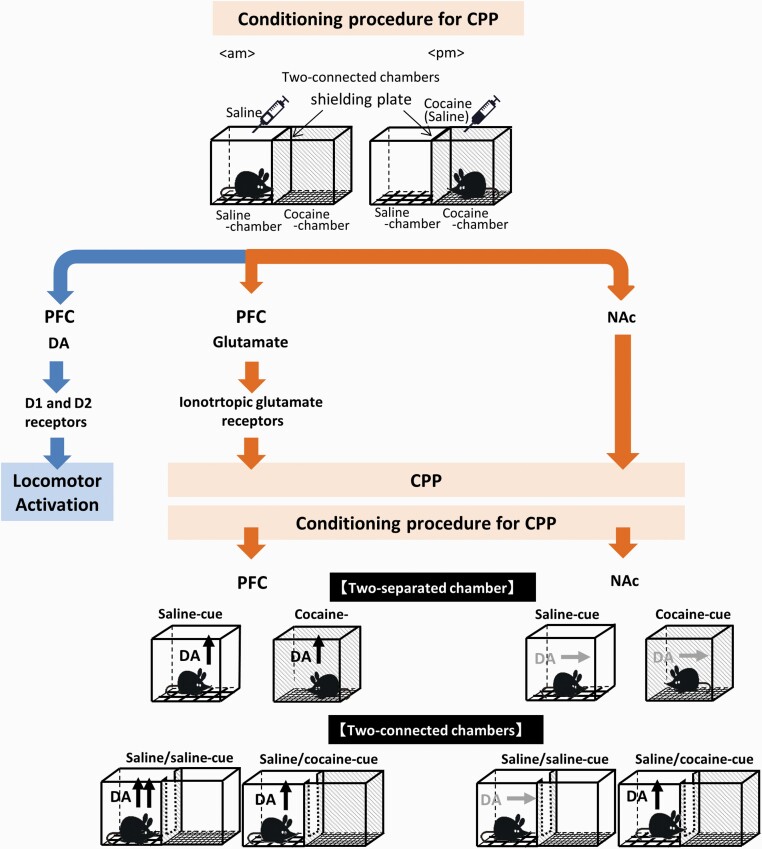Figure 5.
Schematic representation of the distinct role of the dopamine pathways in the prefrontal cortex (PFC) and nucleus accumbens (NAc) in the cocaine conditioned place preference (CPP). This study demonstrates that the dopamine (DA) response in the PFC plays an important role in the recognition of cocaine-associated cues in the cocaine CPP, whereas the DA response in the NAc is related to motivated exploration of cocaine reward. Ionotropic glutamate receptor signaling in the PFC is activated during the cocaine conditioning, leading to the development of cocaine CPP and the induction of the DA response to the cocaine-associated cues in the PFC. The DA responses in the PFC did not differ between 2-separated and 2-connected chambers. In contrast, dopamine in the NAc is responsive to the cocaine-associated cues when 2-connected chambers, but not 2-separated chambers, are used, suggesting that DA in the NAc plays important roles in the exploratory process of the cocaine-associated cues. DA in the PFC also responded to the saline-associated cues via mechanisms involving ionotropic glutamate receptor and DA D1 receptor signaling. In addition, the locomotor response to cocaine is mediated through activation of DA D1 and D2 receptor signaling in the PFC.

